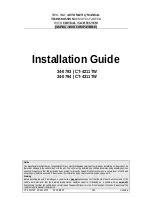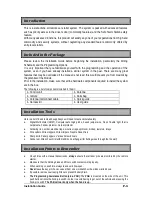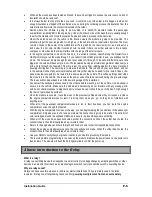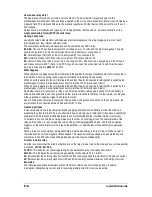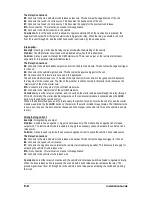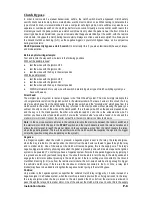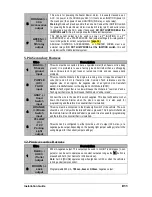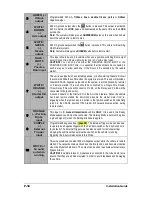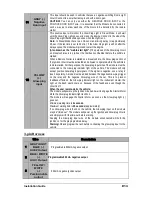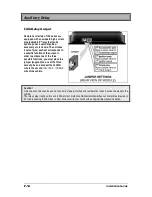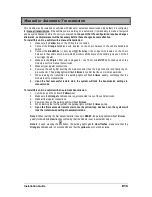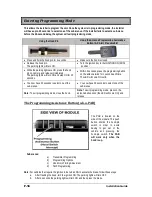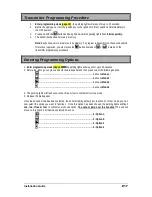
P-4
Installation Guide
•
Inspect vehicle for any body damage or electrical problems.
•
Always solder and tape all connections.
•
Keep the transceiver away from other types of antennas (GPS/OnStar®).
•
Never install the control unit where it could interfere with normal operation or obstruct service technicians.
•
Always use a grommet when running wires into the engine compartment.
•
Never run wires through bare or sharp metal.
•
Do not disconnect the battery on vehicles equipped with air bags and anti-theft radios.
•
Never ground the control unit to the steering column.
•
Make sure that all electrical switches and controls operate properly.
•
Verify that the vehicle starts and idles properly.
•
Make sure that all safety equipment is installed: the valet button (if installed), the hood switch, and the
warning label.
Examples:
Wiring a clutch bypass and a transponder module to the ground out when running wire: At the
junction point, where Ground Out when running “splits” and goes to each device, a diode is inserted on
each of those lines.
Multiple or separate door pin connections:
When joining all door pins together to the door pin input wire of the module, each wire must be isolated
with a diode to prevent feedback.
N.B.: The above examples reflect common situations where diodes are used to isolate. Please note that
there are numerous other scenarios where diode isolation is required.
Always make sure that any external relays or modules added to the Remote Starter module are properly
fused and diode isolated.
•
Vehicles equipped with daytime running lights may not allow the installer to view certain programming
results since the daytime running lights do not turn OFF with the IGN off (Note: The Parking Light output
relay in the module gives two “clicks” per flash, 1 “click” for ON and 1 “click” for OFF).
•
Parking Light flashes referred to in this manual refer to the Parking Light output of the module.
INDUSTRY CANADA USER NOTICE:
Operation is subject to the following two conditions: (1) this device may not cause interference, and (2)
this device must accept any interference, including interference that may cause undesired operation of
the device.
To reduce potential radio interference to other users, the antenna type and its gain should be so chosen
that the equivalent isotropically radiated power (EIRP) is not more than that required for successful
communication.
NOTE: The manufacturer is not responsible for any radio or TV interference caused by unauthorized
modifications to this equipment. Such modifications could void the user's authority to operate the
equipment.
Installation Order
The following is a suggested order for the Installation procedure. It is intended as a guide for novices, to help
make the process of installing a remote starter module easier. Time is wasted by rewiring the module when
mistakes are made. Also, the neatness of the installation is lessened every time the module is taken down and
the wiring is “corrected”.
•
Visit
www.prostart.org
to obtain a copy of your vehicle’s tech sheet. (wire colors and locations)
•
Before you get started, make sure the vehicle starts and idles properly with the Ignition key, and that the
electrical system is not compromised in any way.
•
After deciding what options are to be added to the basic installation, you can start by looking for the wires
that will be needed.
•
Remember to be careful when removing the panels that are covering the wires you are searching for.
•
Once all of the wires have been found, they should be tested to verify that they are the correct ones
needed for the installation.

